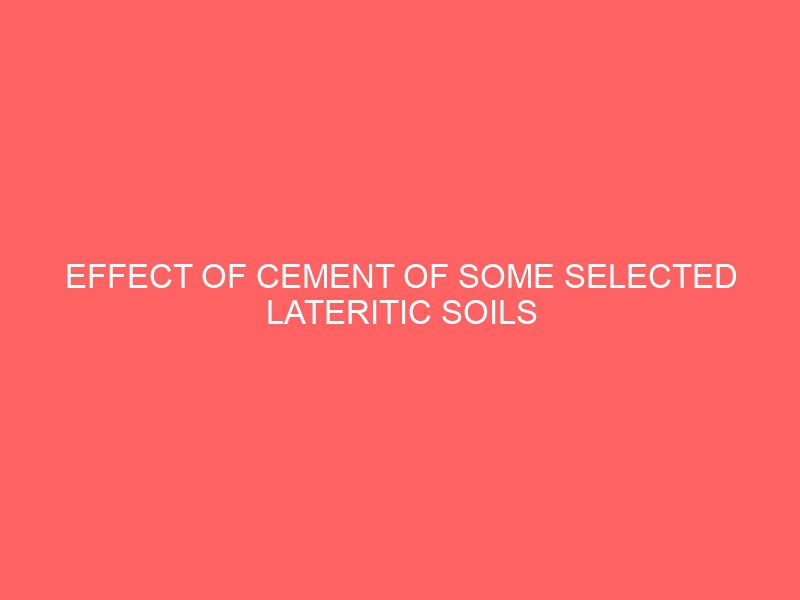Description
CHAPTER ONE
1.0. INTRODUCTION
Roads are main consumers of aggregate and the influence of aggregate cost is added in total construction cost of the roads. In India, use of recycled aggregate from building waste has been studied with the purpose of reduce the material cost Gopala Raju et al., 2010. Similar to this study, the improvement of lateritic soil with cement mixing was modified for base course materials to improve performance. There are many reasons for using LSC, ranging from lack of crushed rock to a desire to reduce crushed rock usage for environmental reasons. The locations of Quarry sites for crushed rocks for road construction are getting more difficult to access and are depleted in many areas of Thailand. The costs of transportation materials from further away may also increase, thus compounding the problem. Another reason for using the LSC is the financial and environmental cost of energy used in the production stage of such highway materials. The increased awareness of environmental impacts has lead to some restrictions being imposed on extraction of natural resources. The crushed rock production process consumes a considerable amount of energy for mining, transportation, burning and which contributes to the total CO2 emissions to the atmosphere. The environmental issues to be addressed include the need to reduce the levels of CO2, emissions. Low cost and environmental friendly features are the added benefit of the stabilization. Lateritic soils are soil types rich in iron and aluminum, distributed in many areas of the world. It is not suitable for const1uction of base course. The selected materials such as crushed rock are usually used for this purpose. The production of crushed rock aggregate involves drilling, blasting, crushing and transportation which can create serious environmental problems. With suitable additive, properties of lateritic soil can be improved. Ordinary Portland cement type 1 is one of the most suitable materials used for road stabilization Ruenkrairergsa T, 1982; Anon, 1990; Mitchell JK, 1981. Portland cement was mixed with the soil at a mix proportion 3, 5, 7 and 9 by weight of dry soil, used water content at the optimum moisture content OMC. Modified compaction specimens were prepared for UCS tests at curing times of 3, 7, 14 and 28 days, respectively. Method of XRD and SEM were performed to investigate the development of microstructures, chemical components and mineral components of soil cement, respectively. The objective of this paper was therefore to investigate major hydration products which contribute of the strength development of LSC by using UCS. Since lateritic soil was mixed with cement for economical and environmental propose, the cement content in the additive should be as low as possible.
1.1. BACKGROUND OF THE STUDY
Lateritic soils are formed in the tropics through weathering processes that favor the formation of iron, aluminum, manganese and titanium oxides. These processes break down silicate minerals into clay minerals such as kaolinite and illite. Iron and aluminum oxides are prominent in lateritic soils, and with the seasonal fluctuation of the water table, these oxides result in the reddish brown color that is seen in lateritic soils. These soils have served for a long time as major and sub=base materials for the construction of most highways and walls of residential houses in tropical and subtropical countries of the world. Civil engineering applications of these lateritic soils are continually being developed with the use of different types of stabilizers. The stabilized soil based products are as such viewed as environmentally friendly and low cost energy materials for sustainable building applications. This work aims at presenting a global view of what has been done in the field of lateritic soil improvement for construction purposes in tropical countries such as Cameroon. This shall be discussed through the presentation of the structure, composition and properties of lateritic soils, the various ways of improving their properties
1.2. OBJECTIVE OF THE STUDY:
At the end if the project, it is expected that the following objectives will be achieved.
The effect of cement on different lateritic soils will be known
The choice of lateritic soil to select in any construction can easily be determined
The percentage strenght of the selected lateritic soils will be known.








Reviews
There are no reviews yet.